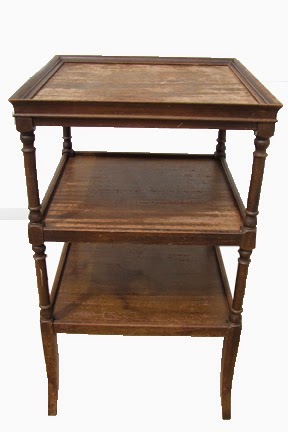 |
| Kalamazoo House |
 |
| Chair Before |
Jim and I love Kalamazoo! It is rich with history, art and music. Our second trip to Kalamazoo was this February, 2012. Like the first time we were there last February, we stayed at "The Kalamazoo House," a beautiful Bed & Breakfast in the heart of downtown, right next to the Kalamazoo Institute of Arts. The Kalamazoo House is a gorgeous three-story structure, Victorian Era Renovated building that was once a funeral home. The owners, Laurel and Terry Parrot, are extremely friendly and welcoming. You feel as though you're visiting friends while staying at the Kalamazoo House. I highly recommend this place if you love to be pampered. They serve amazing breakfasts, too!
So, while in Kalamazoo in February, Jim and I made the decision that we'd definitely want to come back sometime in the summer months to explore the surroundings. But one thing we did find was an amazing antique furniture salvage store that had a ton of lovely antique furniture and hardware, perfect for those who love restoration as much as we do. I spotted this lovely chair in that store. I felt instantly attracted to it, and simply had to have it.
Well, that weekend Jim and I drove his Grand Prix instead of the mini-van which is the vehicle we
 |
| Chair During |
usually drive when we're traveling because we never know when we're going to come across something that wants to come home with us (such as this lovely chair!) I realized that I'd have to pass on it unless we could make it fit into the back seat of his car, so the owner was nice enough to let us remove the chair from her store to try it out and make sure it fit, which it did! I was so glad because I simply had to have this chair as I already had plans for it. Other than some minor surface woodworking and a new seat, this chair didn't need much in the way of restoration.
Once I brought the chair home, it sat throughout the summer as other projects seemed to take priority. Finally, I got to the chair last week and finished it yesterday. I had purchased this gorgeous fabric which was left over from my piano bench project and it was exactly enough to use on this chair. I removed the backing first, and to my surprise, there was yet another fabric underneath the floral design! It was labeled, "red mohair," and I suspect it was original to the chair. Knowing that style of fabric was frequently used in the late Victorian period, I now have a point of origin as to the age of this chair. I suspect it dates back to the late 1890's. This was exciting because it's sometimes difficult, if not impossible, to find out the exact age of a piece of furniture unless you have a marking of some kind. It requires a lot of research in styles to determine the age.
 |
| Chair Finished |
This chair had "good bones" and proved to be an outstanding piece of furniture after the restoration. I removed the backing, but was able to use the original upholstery tacks. And would you believe it? Many of those tacks were so bent I couldn't use them, but found the identical tacks at an estate sale for 50 cents! These extra tacks came in handy since I ended up bending many of them while recovering the chair's back. I then the seat with a new cushion and used new wood because the original wood was completely cracked and not safe to sit on. I custom-sewed the new seat cushion and professionally "tacked" it in place after using my serger on the edges of the fabric so it will never fray. It needed a "touch up" of dark walnut stain and a spray of semi-gloss polyurethane to bring it to life. This sturdy, old chair got a complete makeover.
































